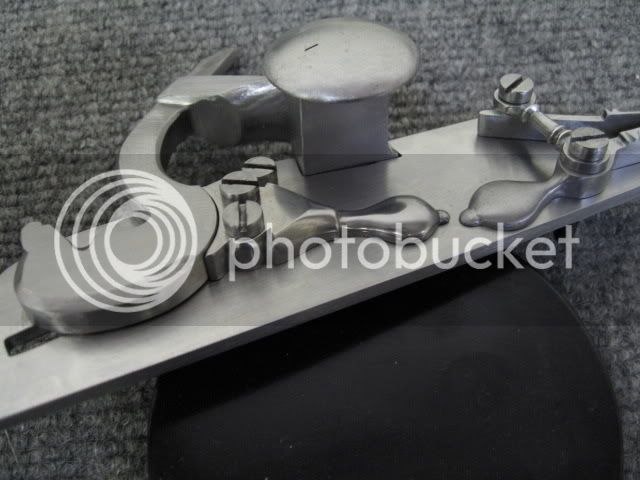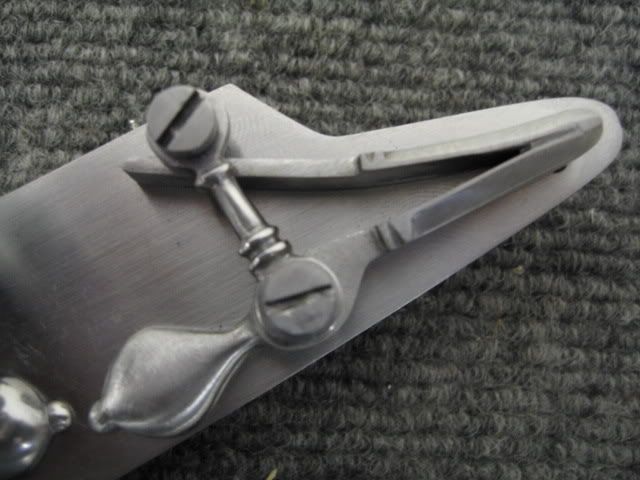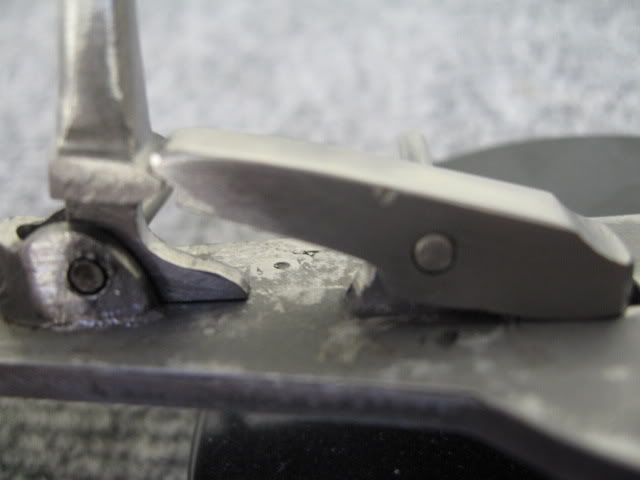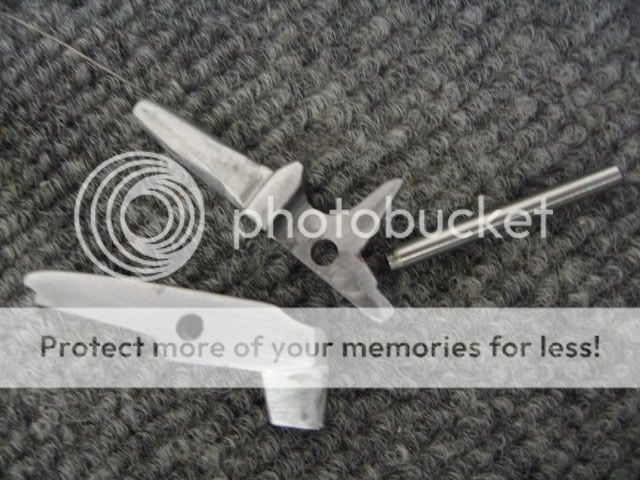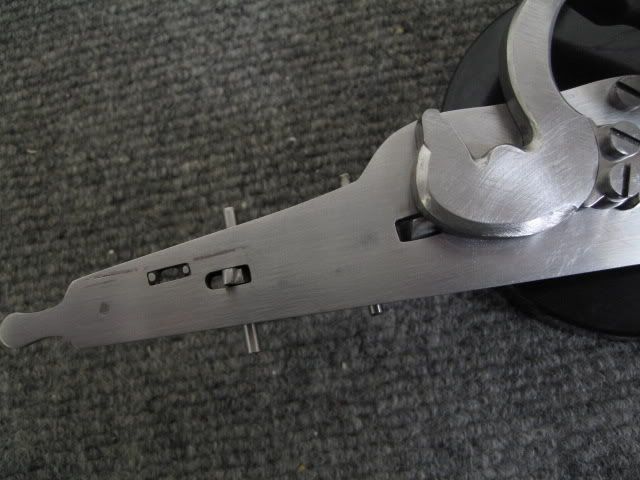First step was to get the lockplate flat and "square".
I used a machinist's vise and an an arbor press to get the casting kinks out. This was after a simple initial draw filing. I merely removed the casting sprues and any grossly high spots.
You will never get it perfectly flat, but it should be as flat as you can get it within reason. With a straightedge, my plate was within .010" over the entire length, prior to drawfiling.
After the drawfiling, the .010" becomes .005" in a hurry. With the mechanical aspect of this lock, these figures could be tripled, and it would still function perfectly. Heck, the best L&R lock that ever left the factory is out 4 to 5 times this figure!
The backside however, has raised allocations for the primary and secondary sear, and the right angle shelf that the pan cover slides on, so a complete drawfiling is impossible. I did drawfile, but just enough to get a predictable flat surface. The indentations to indicate component location are plenty deep, and quite impossible to "erase".
So far so good.
I am now squaring up the remaining parts, but only enough to get the surfaces for critical interface squared away. For instance, the sliding pan cover is only cleaned up on the underside, and not to length, because the pan needs to be "sealed". I left the cover oversize to allow a great fit after the pan is installed. You have to resist the urge to get carried away.
Once again, this set from TRS is top notch. The **** pivot shaft is only "out of round" .001", and unlike the matchlock set, the shaft protrudes exactly 90 degrees from the backside of the ****.
Everything will go along great until it comes time to make the springs into springs, but that is why we have Roy on the forum.






